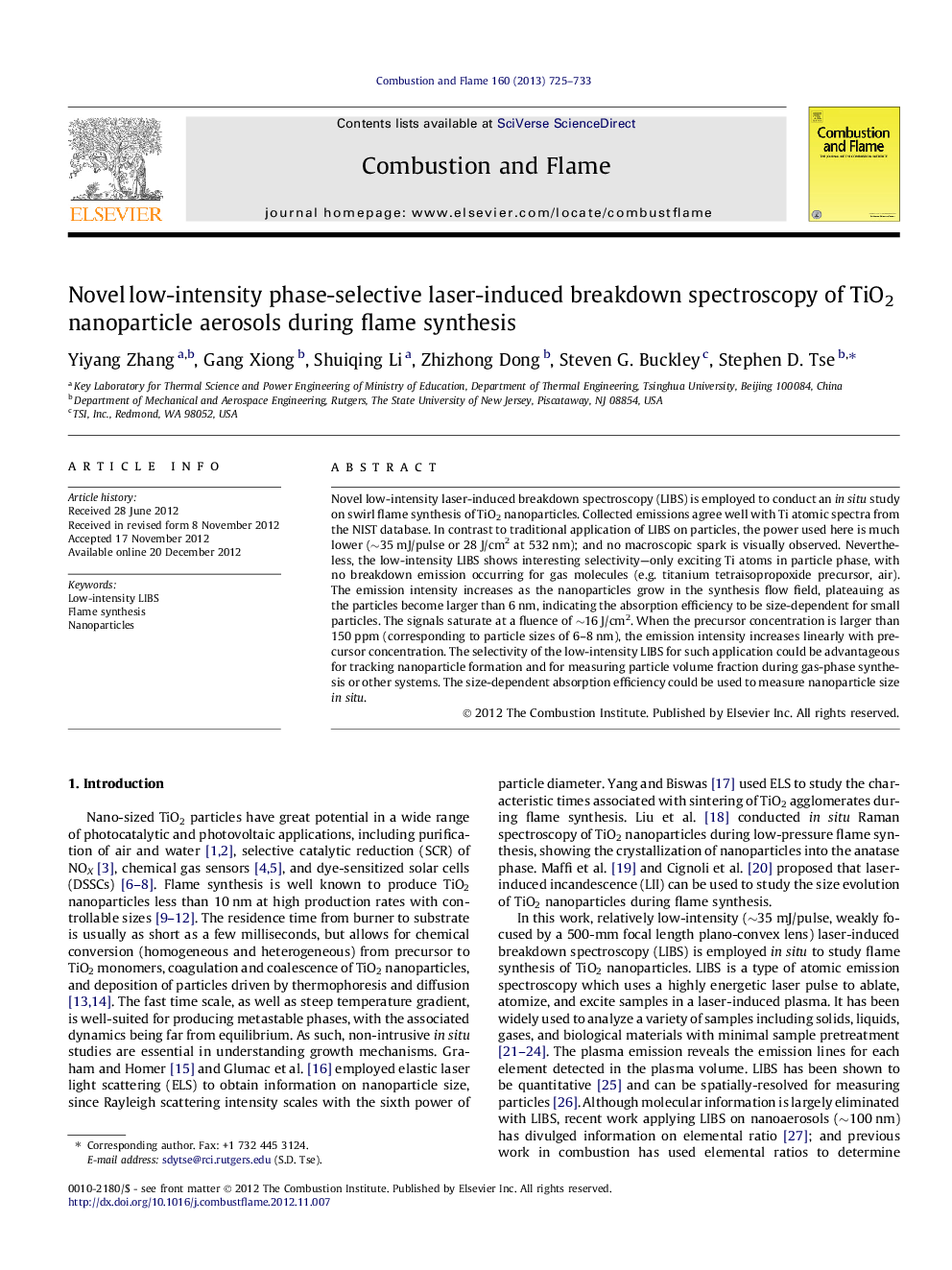| کد مقاله | کد نشریه | سال انتشار | مقاله انگلیسی | نسخه تمام متن |
|---|---|---|---|---|
| 167038 | 457834 | 2013 | 9 صفحه PDF | دانلود رایگان |

Novel low-intensity laser-induced breakdown spectroscopy (LIBS) is employed to conduct an in situ study on swirl flame synthesis of TiO2 nanoparticles. Collected emissions agree well with Ti atomic spectra from the NIST database. In contrast to traditional application of LIBS on particles, the power used here is much lower (∼35 mJ/pulse or 28 J/cm2 at 532 nm); and no macroscopic spark is visually observed. Nevertheless, the low-intensity LIBS shows interesting selectivity—only exciting Ti atoms in particle phase, with no breakdown emission occurring for gas molecules (e.g. titanium tetraisopropoxide precursor, air). The emission intensity increases as the nanoparticles grow in the synthesis flow field, plateauing as the particles become larger than 6 nm, indicating the absorption efficiency to be size-dependent for small particles. The signals saturate at a fluence of ∼16 J/cm2. When the precursor concentration is larger than 150 ppm (corresponding to particle sizes of 6–8 nm), the emission intensity increases linearly with precursor concentration. The selectivity of the low-intensity LIBS for such application could be advantageous for tracking nanoparticle formation and for measuring particle volume fraction during gas-phase synthesis or other systems. The size-dependent absorption efficiency could be used to measure nanoparticle size in situ.
Journal: Combustion and Flame - Volume 160, Issue 3, March 2013, Pages 725–733